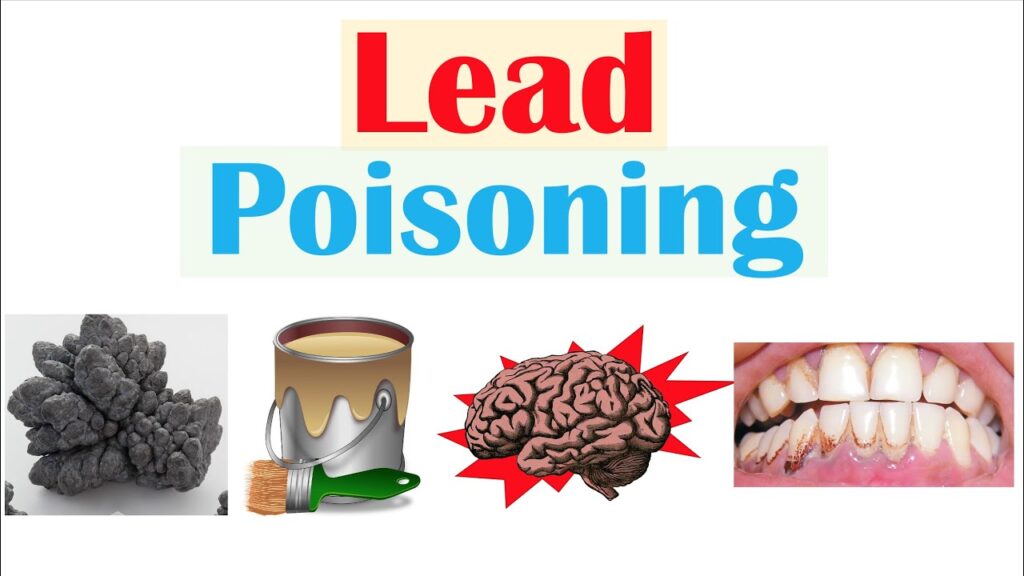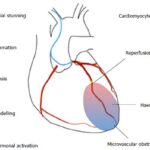Lead toxicity, also known as lead poisoning, occurs when lead accumulates in the body, reaching harmful levels. This heavy metal disrupts multiple physiological systems, particularly affecting the nervous system, kidneys, and cardiovascular health. While lead exposure has significantly decreased due to regulatory measures, it remains a serious environmental health risk, especially for children and occupational workers.

Sources of Lead Exposure
Lead exposure can occur through various sources, including contaminated air, water, soil, and consumer products.
1. Lead-Based Paint
Older homes and buildings (pre-1978) often contain lead-based paint, which deteriorates into dust and can be inhaled or ingested.
2. Contaminated Water
Lead pipes, plumbing materials, and corroded fixtures can leach lead into drinking water, posing a major health risk.
3. Industrial Emissions and Air Pollution
Factories, battery manufacturing plants, and mining operations release lead particles into the air and nearby environments.
4. Imported Products
Certain cosmetics, herbal medicines, toys, and ceramics from unregulated sources may contain lead.
5. Occupational Exposure
Workers in construction, smelting, battery recycling, and auto repair industries are at higher risk of lead poisoning due to prolonged exposure.
6. Food Contamination
Lead can enter the food supply through contaminated soil, cookware, and improper food storage.
Health Effects of Lead Toxicity
1. Neurological and Cognitive Impairment
Lead disrupts brain function, particularly in children, leading to:
✔️ Developmental delays
✔️ Learning disabilities
✔️ Reduced IQ and attention disorders
✔️ Behavioral problems (aggression, hyperactivity)
2. Cardiovascular and Kidney Damage
Chronic exposure increases the risk of:
✔️ Hypertension and heart disease
✔️ Kidney dysfunction and nephrotoxicity
✔️ Anemia due to disrupted red blood cell production
3. Reproductive and Endocrine Disruptions
Lead affects hormone regulation, causing:
✔️ Reduced fertility in men and women
✔️ Increased risk of miscarriage and preterm birth
✔️ Hormonal imbalances affecting overall health
4. Gastrointestinal Symptoms
Early signs of lead toxicity include:
✔️ Abdominal pain and cramping
✔️ Loss of appetite and weight loss
✔️ Nausea, vomiting, and constipation
Diagnosis of Lead Poisoning
1. Blood Lead Level (BLL) Test
A blood test is the primary method for diagnosing lead poisoning. Levels above 5 µg/dL indicate exposure, while ≥45 µg/dL may require medical intervention.
2. X-Ray Fluorescence (XRF) Analysis
This technique detects lead content in bones, helping assess chronic exposure.
3. Urinary Lead Excretion Test
Used in suspected cases of acute lead poisoning, often performed before initiating chelation therapy.
Treatment of Lead Toxicity
1. Removing the Source of Exposure
✔️ Replacing lead-contaminated plumbing
✔️ Eliminating lead-based paints and dust
✔️ Using personal protective equipment (PPE) in occupational settings
2. Chelation Therapy
✔️ EDTA (Ethylenediaminetetraacetic Acid): Used for severe lead toxicity
✔️ DMSA (Dimercaptosuccinic Acid): Oral chelator for moderate poisoning
✔️ BAL (British Anti-Lewisite): Intramuscular injection for high-level exposure
3. Supportive Nutritional Therapy
✔️ Calcium, Iron, and Zinc supplementation reduces lead absorption.
✔️ Vitamin C enhances detoxification by increasing urinary lead excretion.
Preventing Lead Exposure
1. Safe Water Practices
✔️ Use lead-free plumbing materials and water filters certified to remove lead.
✔️ Run tap water for 30-60 seconds before use if using older pipes.
2. Household Lead Control
✔️ Regularly clean dust and surfaces in older homes.
✔️ Test for lead in paint, dust, and soil if living in a pre-1978 home.
3. Occupational Safety Measures
✔️ Wear protective gear and follow workplace safety protocols.
✔️ Wash hands and change clothes after working in high-risk environments.
4. Dietary and Lifestyle Modifications
✔️ Maintain a balanced diet rich in calcium, iron, and vitamin C.
✔️ Avoid using lead-containing cookware, cosmetics, and imported products.
Lead toxicity remains a global health concern, particularly affecting children and occupational workers. Awareness, early detection, and preventive measures play a crucial role in minimizing exposure and mitigating its harmful effects. Through proper regulation, safe practices, and medical intervention, lead poisoning can be effectively controlled, ensuring long-term public health and safety.

